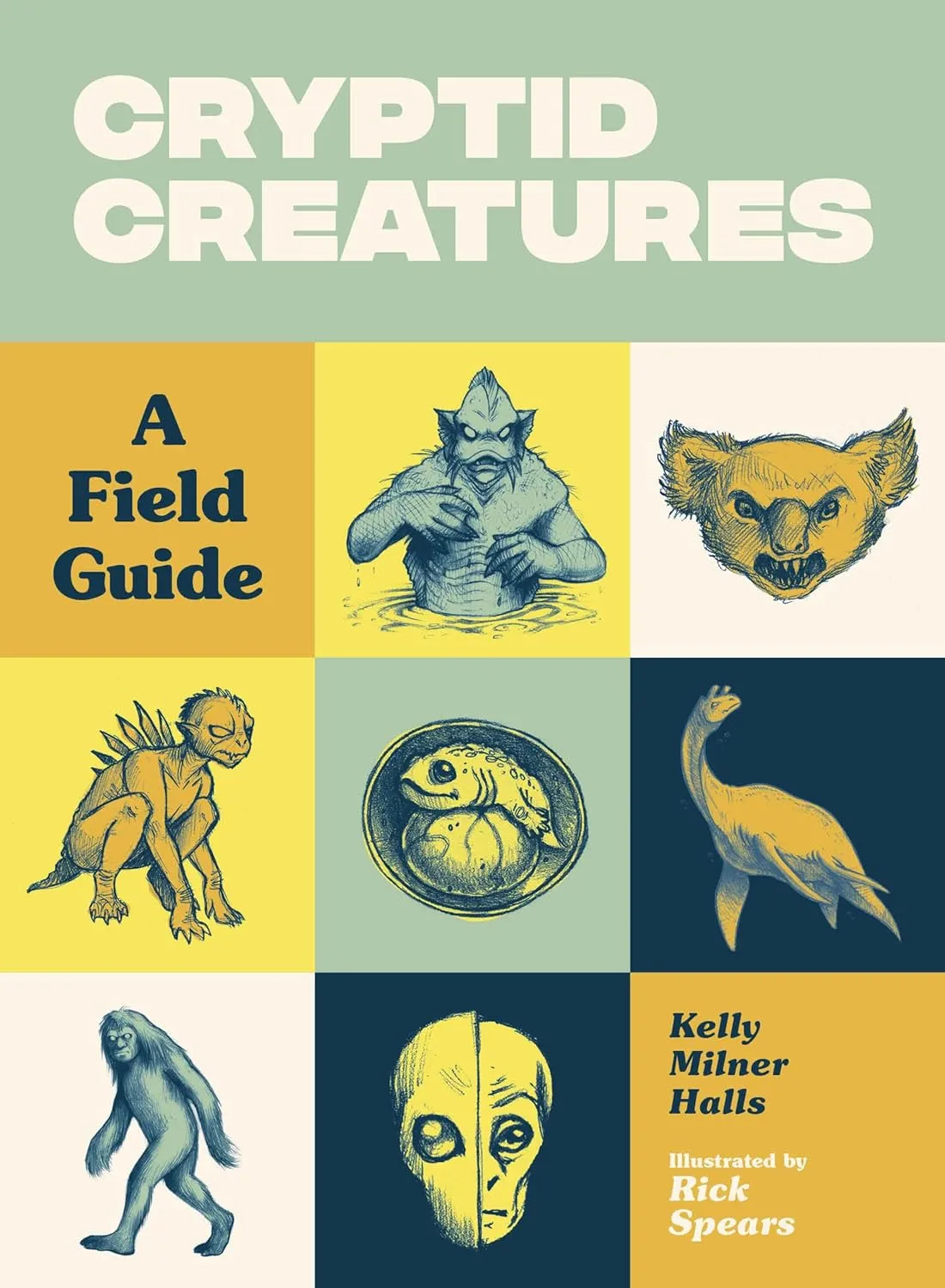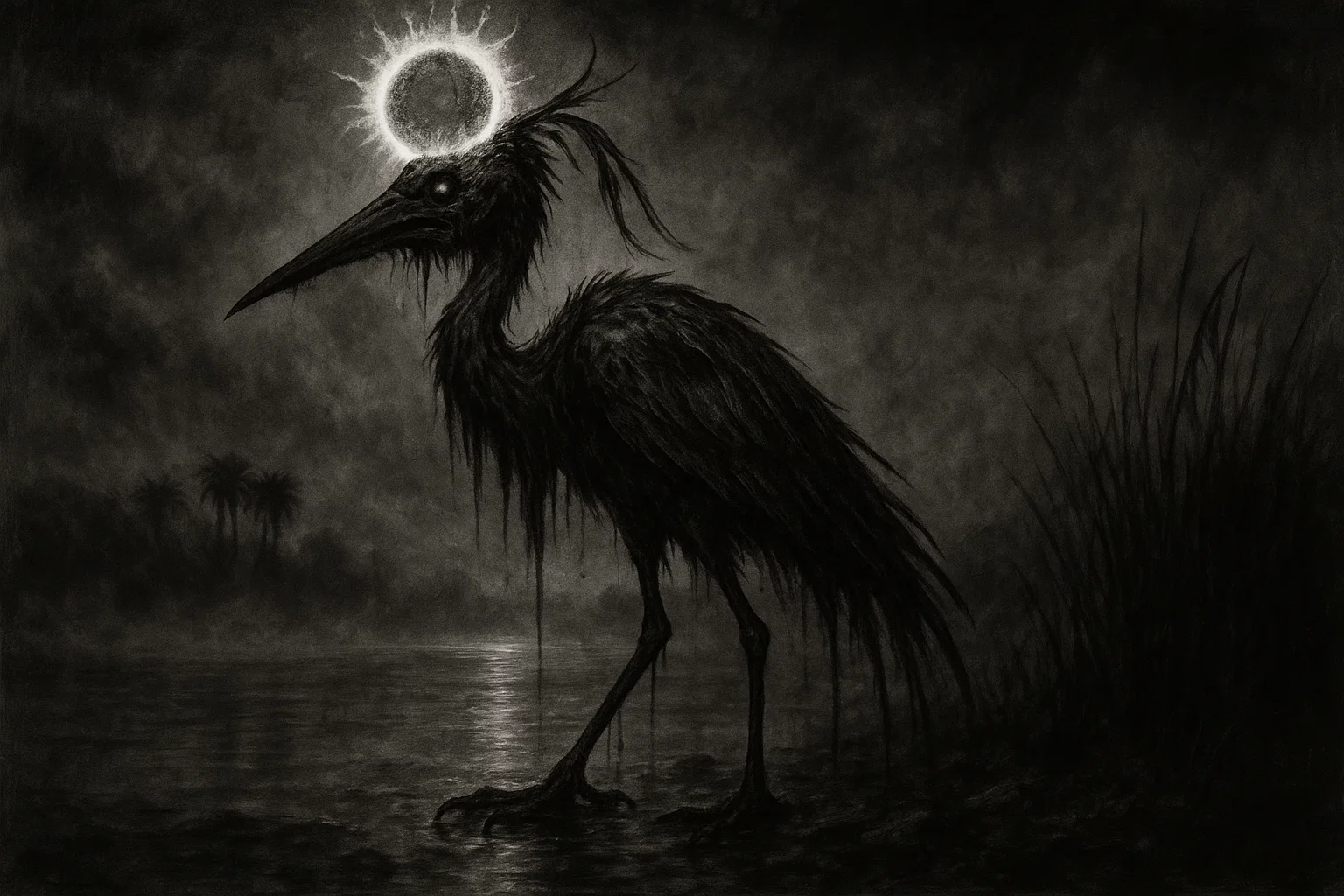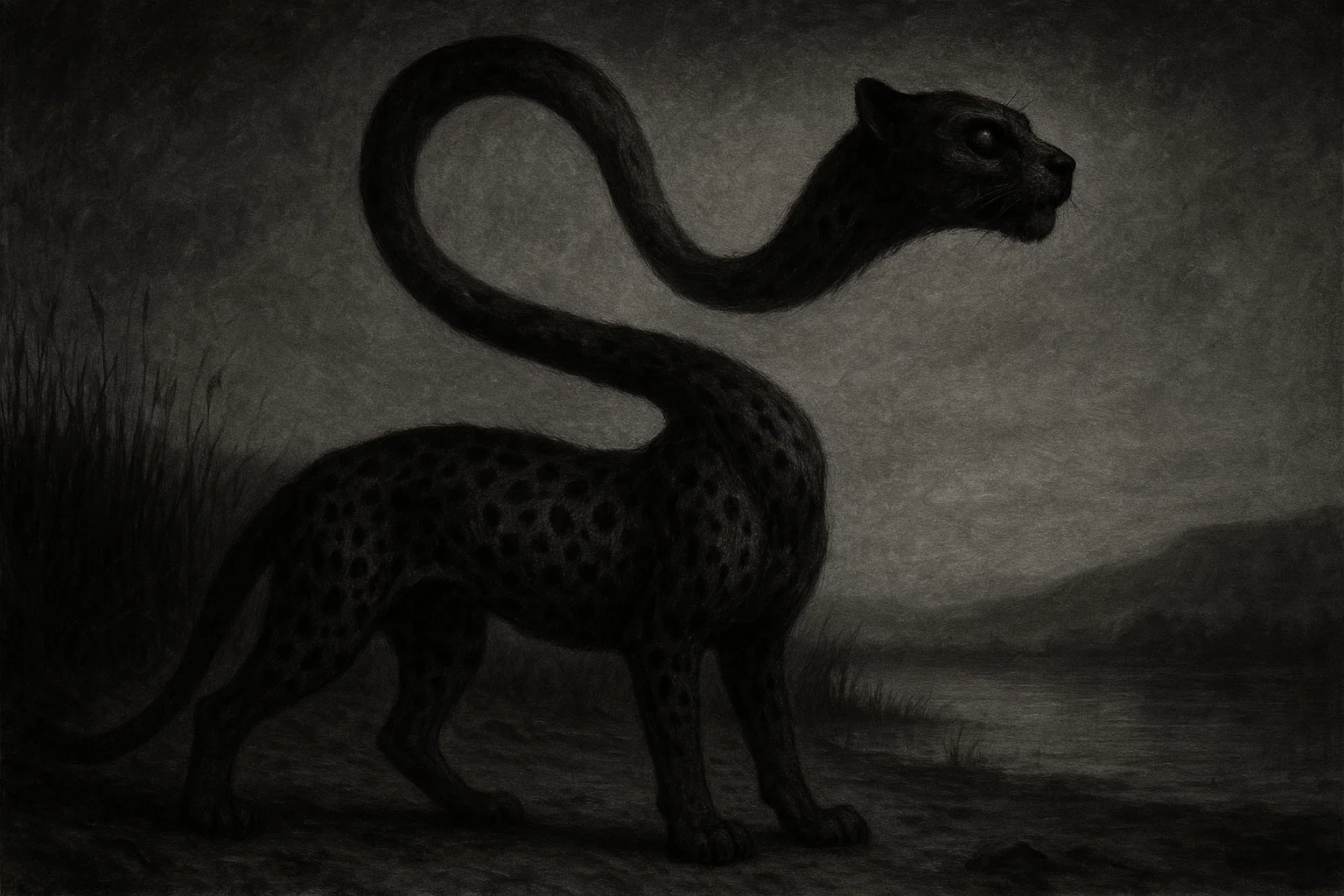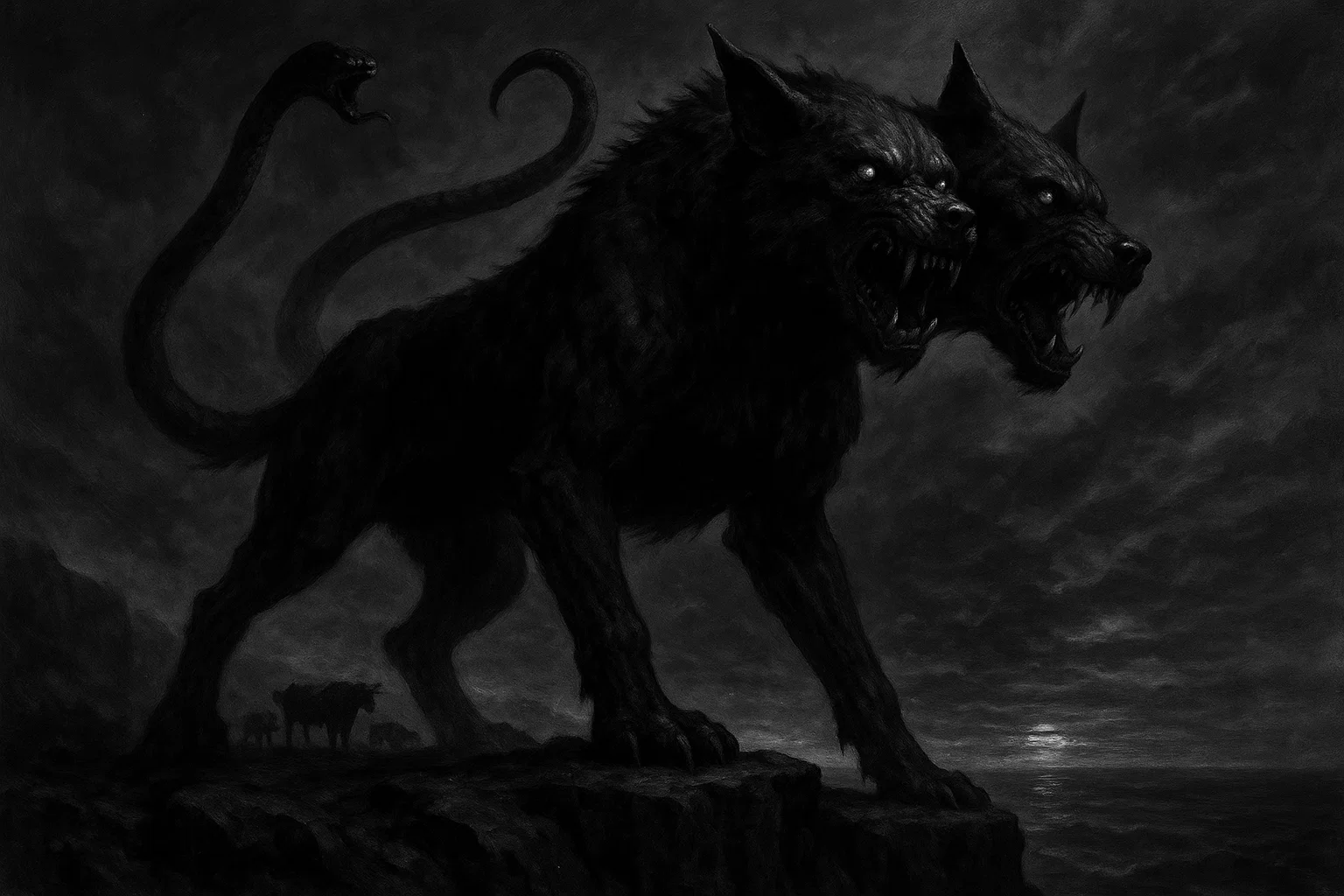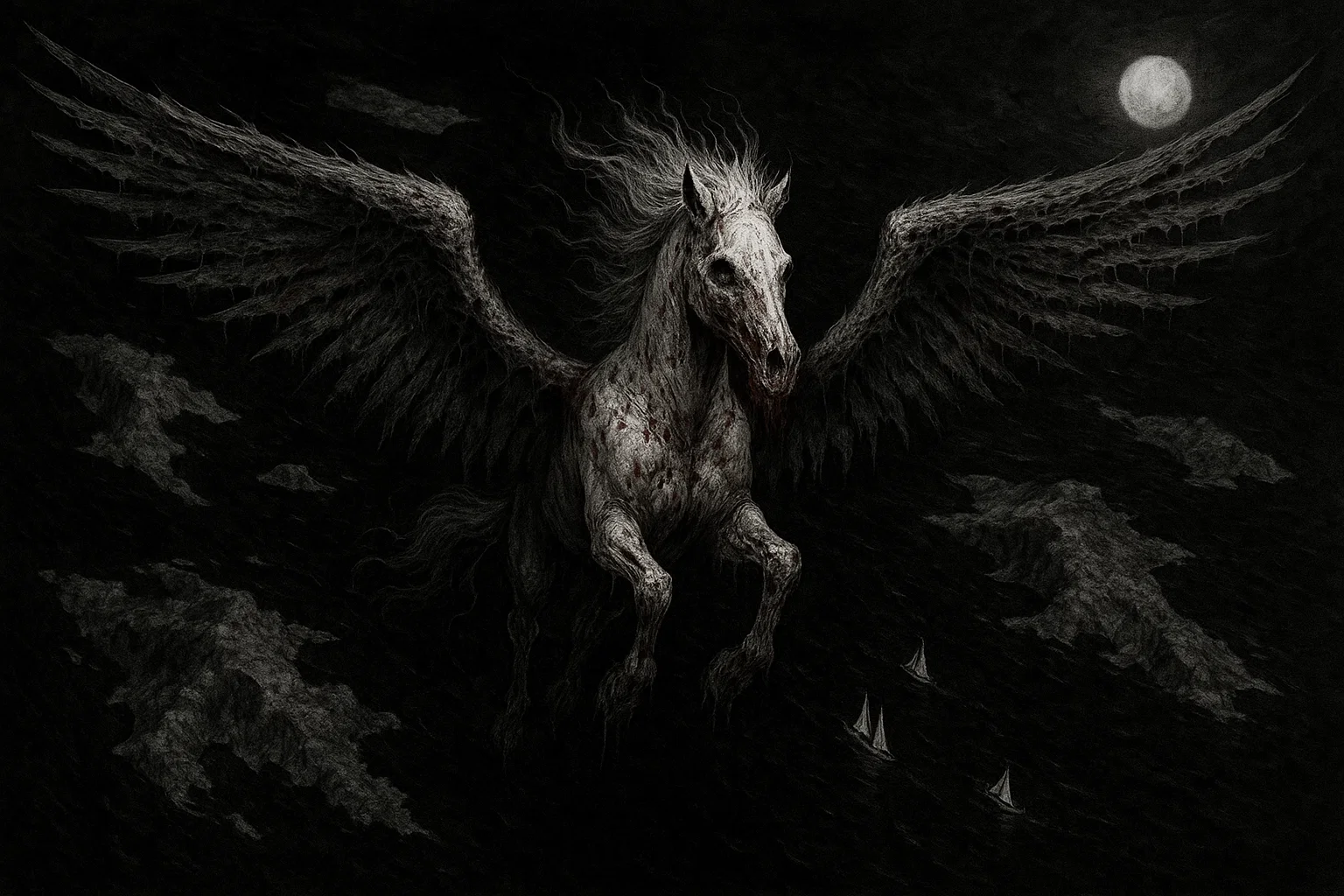The Cahaba River Monster is a reported cryptid from the waterways of central Alabama. Descriptions place it as a large aquatic creature inhabiting the Cahaba River, a tributary of the Alabama River.
Sightings describe a snake-like or humanoid form emerging from the water, often near wooded banks. The legend draws on local folklore and occasional eyewitness accounts, spanning decades.
However, the creature remains unverified, contributing to discussions on regional cryptids in the southeastern United States.
Summary
Overview
| Attribute | Details |
|---|---|
| Name | Cahaba River Monster |
| Aliases | Cahaba Serpent, River Beast of Bibb County |
| Threat Level | Benign to aggressive; reports include splashing but no confirmed attacks on humans |
| Habitat | Cahaba River basin, central Alabama, including shallow riffles and deep pools below 1,000 ft altitude |
| Physical Traits | Serpentine body 15–30 ft long, scaly green or brown skin, horse-like head, flippers or webbed limbs, humps along back; size estimates vary from 10–40 ft |
| Reported Sightings | Bibb County near Centreville, Alabama; Shelby County near Alabaster, Alabama; Dallas County near Selma, Alabama |
| First Documented Sighting | 1930s, during local flooding events along the river |
| Species Classification | Unknown; speculative reptile or amphibian |
| Type | Aquatic |
| Behavior & Traits | Elusive, nocturnal appearances, creates large splashes or wakes, avoids direct confrontation |
| Evidence | Eyewitness accounts, indistinct photographs, water disturbance reports |
| Possible Explanations | Misidentified alligator, large catfish, floating logs, or otters in groups |
| Status | Ongoing mystery; sporadic reports continue into the 21st century |
Who or What Is Cahaba River Monster?
The Cahaba River Monster is an alleged creature sighted in the Cahaba River system in Alabama. Local accounts portray it as an undiscovered aquatic animal that inhabits the river’s clear waters and surrounding wetlands.
The name derives from the river, which originates in the Appalachian foothills and flows 200 miles southwest to join the Alabama River near Mobile Bay. Reports appeared in the early 20th century, often from fishermen and river users, describing unusual disturbances or glimpses of a large form beneath the surface.
The cryptid fits into the broader American folklore of river monsters, similar to those in the Mississippi or Tennessee rivers. Descriptions vary, but common elements include a long body and a head resembling a snake or a horse.
Witnesses claim the creature surfaces briefly before submerging, leaving wakes or splashes. No physical specimens exist, and investigations have relied on oral histories from Bibb and Shelby counties.
The legend persists through community storytelling, with some attributing it to Native American tales of water spirits from the Creek and Choctaw peoples who once lived along the river.
The One Book That Turned “Monster Hunting” From Joke to Actual Science
Limited-Time: Up to 46% OFF!
Bigfoot, Loch Ness, Chupacabras, Mothman, Yeti, and dozens more – the original A-to-Z encyclopedia with 100+ fully researched cryptids, eyewitness accounts, expedition histories, and the evidence that made skeptics sweat. Loren Coleman and Jerome Clark’s 1999 classic that launched a thousand investigations.
What Does Cahaba River Monster Look Like?
Eyewitness reports describe the Cahaba River Monster as a large, elongated creature adapted to river environments. The body measures 15 to 30 feet in length and 2 to 3 feet in diameter at its thickest point. The skin appears scaly and colored in shades of green or muddy brown, blending with the riverbed and vegetation.
A prominent feature is the head, often likened to a horse’s, with small eyes and a wide mouth. Some accounts mention horns or a mane-like ridge along the neck.
The creature has a snake-like shape, with multiple humps or undulations along its back that break the water’s surface as it moves. Limbs, if present, are flipper-like or webbed, aiding propulsion in currents. Tail descriptions vary, ranging from a finned paddle to a tapered whip. Coloration shifts with lighting; daytime sightings show darker tones, while nocturnal reports note a silvery sheen.
Size estimates reach up to 40 feet in exaggerated tales, though most fall under 25 feet. These traits distinguish it from known river fauna, such as alligators, which lack the length and humps.
You may also enjoy:
Who Is Lucifuge Rofocale in Demonology?
August 25, 2025
Complete Guide to Iowa Bigfoot Sightings (1965–2025)
July 28, 2025
The Terrifying Troll: Scandinavian Monster of Stone and Shadow
September 12, 2025
USS Alabama Haunting: Eerie Ghost Sightings You Won’t Believe
September 23, 2025
Who or What Was the Wolf Woman of Mobile?
April 17, 2025
Who Really Is Mephistopheles in the Faust Legend?
August 26, 2025
Habitat
The Cahaba River Monster is said to live exclusively in the Cahaba River basin, a 1,800-square-mile watershed in central Alabama. The river begins near Irondale in Jefferson County, at an elevation of about 600 feet, and descends through rolling hills to its confluence with the Alabama River near the community of Paces in Dallas County.
Specific hotspots include shallow riffles near Centreville in Bibb County, where clear waters expose rocky bottoms, and deeper pools around Alabaster in Shelby County, fringed by hardwood forests and pine thickets.
Environmental conditions support the legend: the river features a subtropical climate with hot summers averaging 90°F and mild winters around 50°F, fostering dense vegetation such as bald cypress, water oaks, and cane brakes along the banks.
Fauna includes bass, catfish, and otters, along with occasional alligators in the lower reaches. Human settlements, such as the city of Birmingham upstream and rural communities downstream, border the habitat, leading to frequent recreational use by canoeists and anglers.
Flooding events, common in spring, are linked to increased sightings, as high waters may displace the creature into shallower areas. The basin’s biodiversity, with over 130 fish species, provides cover in undercut banks and submerged logs, ideal for a bizzare aquatic form.
Cahaba River Monster Sightings
| Date | Place | Witness Details | Description | Reliability |
|---|---|---|---|---|
| 1934 | Bibb County near Centreville | Local fisherman John Hargrove | Large serpentine form with horse head surfaced near boat, created wake before diving | Medium: Single witness, no photo |
| 1952 | Shelby County near Alabaster | Group of three canoeists | Humped back broke water surface 20 ft long, green scales visible in sunlight | High: Multiple witnesses |
| 1967 | Dallas County near Cahaba Heights | Hiker on riverbank, anonymous | Webbed limbs and tail splashed water, estimated 25 ft length | Low: Single account, vague details |
| 1978 | Bibb County at Six Mile Creek confluence | Family picnicking, two adults | Horse-like head emerged, eyes reflected light, submerged with bubbles | Medium: Corroborated by two |
| 1985 | Shelby County near Old Cahaba ruins | Angler Robert Ellis | Undulating body with three humps, brown coloration, moved against current | Medium: Detailed sketch provided |
| 1993 | Jefferson County near Trussville | Kayaker and friend | Flippers visible, 15 ft length, created large ripple | High: Two witnesses, video attempt failed |
| 2001 | Bibb County downstream of Marvel | Environmental survey team, four members | Disturbance with submerged shadow, possible scales glimpsed | High: Professional observers |
| 2014 | Shelby County at Canoe Landing off Overton Road | Recreational paddler | Serpentine shape near lily pads, quick submersion | Low: Single blurry photo |
| 2020 | Dallas County near Millbrook | Fishermen duo | Humped form surfaced at dusk, estimated 30 ft | Medium: Audio of splash recorded |
John Hargrove (Bibb County, 1934)
In spring 1934, during a period of heavy rains that swelled the Cahaba River, fisherman John Hargrove encountered the creature while casting lines near Centreville.
Hargrove, a 45-year-old resident familiar with the river’s fish populations, reported his boat rocking violently as a long form surfaced 10 feet away. The head resembled a horse, with flared nostrils and small ears, attached to a neck that extended 5 feet above water. The body trailed behind in coils, covered in rough scales that caught the morning light.
Hargrove dropped his pole and paddled to shore, claiming the monster followed parallel for 50 yards before vanishing into a deep pool. Local newspapers covered the story, interviewing Hargrove, who sketched the head; no prior incidents were noted in the area. This sighting established the horse-head motif in later reports.
This Book Turns the Entire United States Into One Giant X-Files Map
Limited-Time: Up to 38% OFF!
J.W. Ocker traveled the country collecting the weirdest local legends and marks the real-world locations where the Beast of Bray Road, the Dover Demon, the Wendigo, and hundreds more have been spotted. Part travel guide, part bestiary, 100% nightmare fuel.
Group of Canoeists (Shelby County, 1952)
On a clear July afternoon in 1952, three men from Birmingham—engineer Paul Jenkins, salesman Tom Reed, and mechanic Lee Baxter—paddled downstream from Alabaster.
Midway through their trip, near a bend with overhanging willows, they observed a series of humps protruding from the water, spanning 20 feet. The skin appeared green and mottled, with fins or flippers propelling it upstream against the current. Jenkins estimated the total length at 25 feet, noting the absence of a visible tail.
The creature submerged when the canoe approached within 15 feet, leaving a trail of foam. The men reached shore and alerted authorities, providing consistent descriptions.
A follow-up search by locals found unusual tracks—three-toed impressions—in the mud. However, skeptics attributed them to wading birds. This multi-witness event boosted regional interest.
Robert Ellis (Shelby County, 1985)
Robert Ellis, a 52-year-old retired mill worker, was fly-fishing near the historic Old Cahaba ruins on October 12, 1985, when the encounter occurred.
At twilight, as mist rose from the water, Ellis saw an undulating shape approaching from downstream. The body featured three distinct humps, each 2 feet high, covered in brown, bark-like scales. A head on a short neck broke the surface, mouth agape as if feeding on insects.
Ellis cast his line instinctively, but the creature veered, creating a whirlpool that nearly overturned his waders. He retreated to his truck and drew a detailed illustration, later shared with the Birmingham News. Ellis reported no aggressive intent, but the speed—estimated at 10 mph—impressed him.
Divers searched the site days later, finding a large submerged log, yet Ellis insisted the movement was alive.
You may also enjoy:
The Japanese Oni Monster: Appearance, Powers, and Myths
September 9, 2025
Hell’s Gate Bridge Haunting: From Tragic Deaths to Demonic Portals
September 23, 2025
Who Is Bael (Baal), the First King of Hell?
May 9, 2025
Complete Guide to Oregon Bigfoot Sightings (1904–2025)
August 6, 2025
Who Is the Demon Caim in the Ars Goetia?
August 20, 2025
Environmental Survey Team (Bibb County, 2001)
During a routine water quality assessment on August 7, 2001, a four-person team from the Alabama Department of Environmental Management—biologist Sarah Kline, technician Mark Donovan, hydrologist Lena Torres, and intern Jake Ruiz—documented an anomaly near Marvel.
While sampling at a riffle, they noted a shadow beneath the surface, approximately 18 feet long, with irregular contours suggesting scales. A disturbance followed, with water displacing as if from a tail stroke. Torres recorded pH fluctuations possibly linked to the event.
The team avoided pursuit, prioritizing safety, and submitted a formal report classifying it as an unidentified aquatic disturbance. No photos captured clarity due to glare, but logs corroborated the timing. This professional sighting lent credibility, prompting brief media coverage.
Evidence & Investigations
Evidence for the Cahaba River Monster consists primarily of eyewitness testimonies and indirect traces. Over 20 reports since the 1930s describe consistent features, such as humped backs and horse-like heads, often from credible sources, including fishermen and surveyors.
Photographs exist but remain inconclusive: a 2014 image near Overton Road shows a dark shape amid ripples, dismissed by experts as a submerged branch. Audio recordings, like a 2020 splash near Millbrook, reveal loud impacts but no distinct vocalizations. Physical traces include mud impressions from 1952, analyzed as possible webbed prints, though they degraded quickly.
Investigations have been limited, reflecting the cryptid’s low profile. In 1953, following the Alabaster sighting, the Birmingham Canoe Club organized a search with divers and boats, covering 5 miles of river; they recovered large fish bones, but no monster remains.
The Alabama Department of Conservation and Natural Resources monitored the basin in the 1980s amid pollution concerns, noting unexplained water displacements during Ellis’s 1985 report, yet attributed them to currents.
Cryptozoologist Loren Coleman referenced the legend in his 1980s surveys of southern river cryptids, interviewing witnesses and concluding patterns suggested a large reptile, though without specimens.
Modern efforts include citizen science via apps like iNaturalist, where 2010s submissions tagged “Cahaba anomaly” yielded sonar readings of large shadows, later matched to schools of gar fish.
A 2018 expedition by the Cahaba River Society, focused on ecology, incidentally captured trail cam footage of wakes, but analysis pointed to beavers.
No expeditions have yielded DNA or fossils, and scientific consensus views reports as misidentifications. Despite this, annual river cleanups incorporate “monster watches,” blending conservation with folklore.
People Swore They Saw Something Impossible… This Book Shows You the Photos, Tracks, and DNA
Limited-Time: Up to 18% OFF!
Gorgeous full-color illustrations meet hard evidence: hair samples that don’t match any known animal, sonar hits in Loch Ness, night-vision footage, and survivor testimonies. Kelly Milner Halls separates hoax from holy-crap-this-might-be-real for every major cryptid still out there.
Theories
Surviving Prehistoric Reptile
One theory posits the Cahaba River Monster as a remnant population of a prehistoric aquatic reptile, such as a basilosaurid whale or zeuglodon, known from Eocene fossils in Alabama’s Black Belt region.
These ancient cetaceans reached 50 feet in length, with elongated bodies and small heads, matching the size descriptions. The Cahaba’s fossil-rich sediments, including marine deposits dating back 40 million years, could harbor isolated survivors in deep pools.
Proponents cite the river’s stable hydrology and low human impact in the upper reaches as refugia. Sightings during floods align with displaced fossils or rare emergences.
However, paleontologists note zeuglodonts lacked humps and were fully marine, not river-adapted.
Giant Exotic Fish Species
Reports may originate from encounters with oversized native or introduced fish, particularly alligator gar (Atractosteus spatula), which grow to 10 feet in Alabama rivers. The gar’s long snout resembles a horse’s head, and its armored scales mimic reptilian skin.
Groups of gar create humped wakes when schooling, explaining multi-hump sightings. Introduced in the 1970s through aquaculture escapes, Asian carp could amplify disturbances through leaping behavior.
Fishermen like Hargrove in 1934 might have glimpsed gar during spawning. This theory fits the evidence, as gar DNA appears in basin samples, and their mysterious nature matches the monster’s behavior. Critics argue that gar lack flippers and rarely surface fully.
Misidentified Alligator or Otter Activity
Central Alabama’s warming climate has expanded the American alligator (Alligator mississippiensis) range into the Cahaba, with adults reaching 12 feet. A surfacing gator’s back humps and thrashing tail produce splashes akin to reports.
Otter (Lontra canadensis) rafts, numbering up to 10, form undulating lines in water, with heads bobbing like a snake-like form. The 1952 canoeists’ sighting parallels otter hunts near Alabaster. Alligators’ eyeshine and bellows could inspire nocturnal tales. Investigations, like the 1953 search, found gator signs but no anomalies.
This explanation accounts for 70% of reports from wildlife cameras, though it fails to account for 30-foot estimates or horse-head details.
Cultural Memory of Extinct Megafauna
The legend may preserve oral histories of extinct Pleistocene megafauna, such as short-faced bears or giant beavers, adapted to post-glacial rivers.
Creek Native accounts from the 1700s describe “water panthers” with long necks, possibly echoing mammoth or mastodon wallows mistaken for monsters. European settlers in the 1800s blended these with Biblical serpents, amplifying folklore. The 1934 sighting coincided with Depression-era tall tales.
Anthropologists link it to broader Southeastern myths, like the Yazoo River mermaid. This theory explains variability but lacks direct ties to physical evidence, viewing the monster as symbolic rather than biological.
You may also enjoy:
Who Is Vapula? The Lion-Winged Demon of Hell
August 28, 2025
Who Is Hanbi? The Formless Demon of Ancient Mesopotamia
October 1, 2025
Is the Drish House the Most Haunted Mansion in Alabama?
September 3, 2025
Complete Guide to Ohio Bigfoot Sightings (1860–2025)
August 5, 2025
Comparison with Other Similar Cryptids
| Cryptid | Habitat | Physical Traits | First Sighting | Status |
|---|---|---|---|---|
| Coosa River Monster | Coosa River, Alabama/Georgia | Serpent-like, 20–50 ft, smooth skin, no limbs | Early 1800s | Ongoing mystery |
| Ogua Monster | Monongahela River, West Virginia/Pennsylvania | Bull-headed, flippers, 15–20 ft, scaly | 18th century Native reports | Sporadic reports |
| Altamaha-ha | Altamaha River, Georgia | Alligator head, long neck, flippers, 20–30 ft | Muscogee traditions, 1700s | Actively reported |
| Piasa Bird | Mississippi River near Alton, Illinois | Winged reptile, horned head, 20 ft wingspan | Illini legends, 1673 | Cultural icon, no recent sightings |
| Champ | Lake Champlain, New York/Vermont | Plesiosaur-like, humped back, 20–30 ft | 1609 Champlain account | Ongoing investigations |
| Mokele-Mbembe | Congo River Basin, Africa | Sauropod-like, long neck, 30–50 ft | 1776 German explorer | Expeditions continue |
| Igopogo | Lake Simcoe, Ontario, Canada | Serpentine, dog-like head, 15–40 ft | 1880s settler reports | Tourist attraction |
| Nahuelito | Nahuel Huapi Lake, Argentina | Plesiosaur form, humps, 15–25 ft | 1922 diver sighting | Occasional reports |
| Storsjöodjuret | Lake Storsjön, Sweden | Multi-humped serpent, 30 ft, ugly head | 1635 manuscript | Local legend |
| Selma Serpent | Alabama River near Selma, Alabama | Eel-like, 20–40 ft, smooth body | 1850s steamboat sightings | Historical, rare modern |
Is Cahaba River Monster Real?
The Cahaba River Monster persists as a staple of Alabama folklore, supported by decades of consistent eyewitness accounts but undermined by a lack of tangible proof. Descriptions align across unrelated witnesses, suggesting a shared phenomenon.
Yet, explanations like gar fish or alligators fit most details without invoking the unknown. Cultural theories highlight its role in preserving Indigenous and settler narratives, enriching regional identity amid the river’s ecological importance.
Likelihood leans toward misidentification, given the basin’s diverse wildlife and human activity. No expeditions have confirmed existence, and evidence remains anecdotal.
Still, the legend fosters environmental awareness, drawing visitors to the Cahaba’s biodiverse waters. Whether relic or myth, it shows nature’s capacity to inspire wonder, leaving open the possibility of discovery in uncharted depths.




